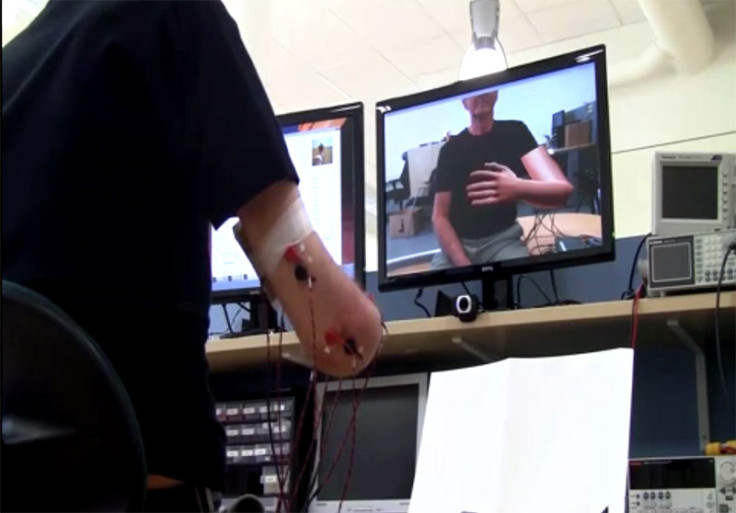Phantom Limb Pain Can be Treated Using Virtual Reality

Researchers at Gothenburg's Chalmers University of Technology in Sweden have been able to ease the phantom limb pain that amputees suffer by rigging them up to an augmented virtual reality computer game where they can move a virtual limb.
Amputee Ture Johanson, 73, who lost half of his right arm up till his elbow in a car accident in Sweden 48 years ago, was hooked up to a virtual reality car racing game where electric signals sent from the stump of his arm could be used to control and turn a virtual right wrist to steer a car on the screen.
Thanks to using the computer game regularly at home, Johanson's pain has reduced dramatically, allowing him to sleep through the night and he is now able to experience periods where he is completely free of pain.
"He was extremely happy, as you could imagine. He hadn't used his arm in 48 years, and that's exactly why we do the research. It's truly rewarding to see it working like this," Max Ortiz Catalan, a Mexican researcher and PhD candidate at Chalmers University told The Local.
The therapy has been so successful for Johanson that he has now learned to control the movements of his phantom wrist and hand even when he is not hooked up to the computer and using a visible virtual limb.
Phantom limb pain syndrome is estimated to affect about 70% of people who have had a limb amputated, but scientists do not yet know exactly how phantom pain is caused.
"The leading theory is that the brain map of your own body changes after an amputation. This means that amputees, whether it's a limb, breast, nose... anything, they can suffer phantom pain. What we are trying to do is potentially restore the original map, by allowing the patient to use the missing limb, and therefore get rid of the pain," Ortiz Catalan said.
The researchers also think that the augmented virtual reality therapy could be useful in helping to rehabilitate patients that have experienced spinal cord injuries or suffered from a stroke.
The researchers have now extended their work to run trials at three other hospitals in Sweden and several more abroad, where they focus on patients experiencing severe pain, where other traditional methods to help them have all failed.
The researchers have also developed a system similar to the one Johanson is using, meant for patients to use at home, which is currently awaiting approval for release.
© Copyright IBTimes 2025. All rights reserved.






















